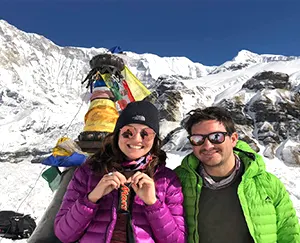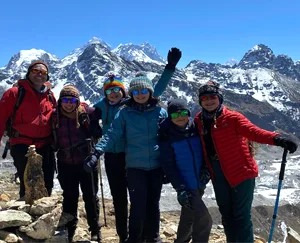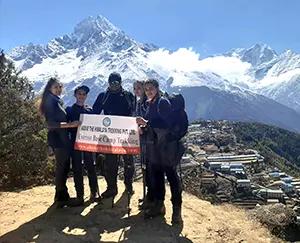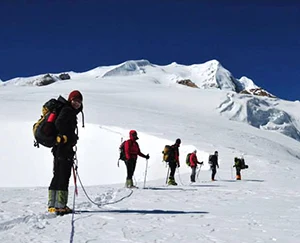Western Bhutan Tour
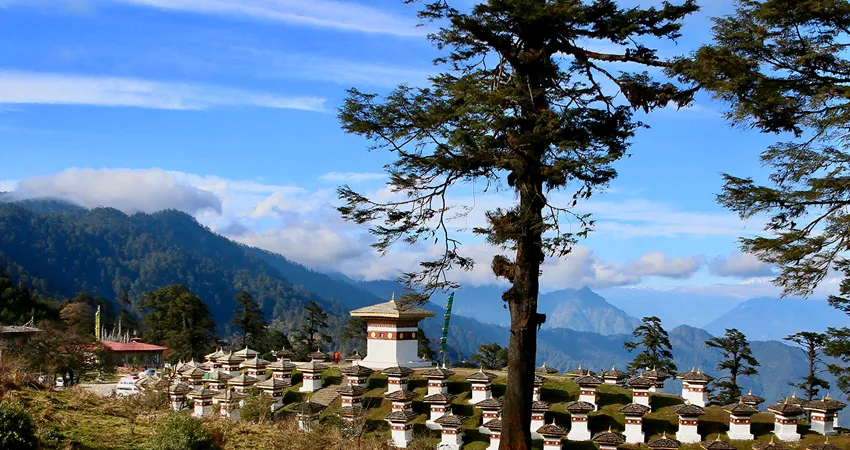
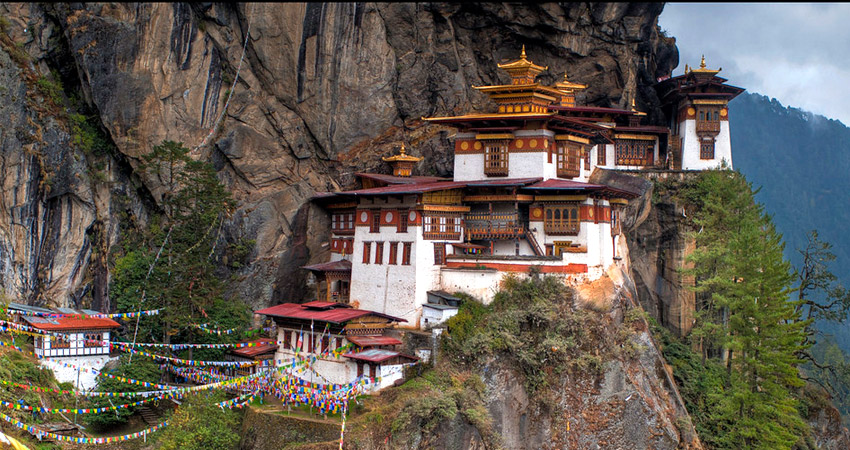
Trip Highlights of Western Bhutan Tour
- Hike to the cliffside Tiger’s Nest Monastery (Taktsang) in Paro.
- Explore the majestic Punakha Dzong at the junction of two rivers.
- Enjoy panoramic views of Himalayan peaks from the Dochula Pass (3,100m).
- Discover Thimphu’s cultural sight like Memorial Chorten and Buddha Dordenma.
- Spot rare black necked cranes in the alpine Phobjikha Valley (winter).
- Receive a traditional blessing at Chimi Lhakhang, the Fertility Temple.
Overview of Western Bhutan Tour
Start a Western Bhutan Tour to experience the mystical charm of the world’s last Himalayan kingdom in just one week. This 7 day tour will bring you into the rich cultural heritage and the perfect nature of Bhutan in their most famous western areas. As you descend into Paro’s valley, ringed by Himalayan peaks, you are greeted by crisp mountain air, green valleys, and the warm welcome of Bhutan.
Throughout our visit of Western Bhutan Tour, you will explore the vibrant city of Thimphu, the serene alpine valley of Phobjikha (Gangtey), the historic former capital of Punakha, and the scenic Paro Valley. Each destination of interest has a varying look of the ancient culture in Bhutan and the amazing landscape. Hike with red robed monks in centuries old monasteries and castles known as dzongs.
Stroll over terraced hillside and pine trees to religious mountain temples. There are high passes like Dochula which give the beautiful views of snow capped mountains.Visit to grand Punakha Dzong, or the most beautiful fortress in Bhutan, and the adventure to the legendary Tiger’s Nest Monastery (Taktsang) that is located on a precipice above Paro Valley are the best experiences on the trip. You will go through the small villages of farmland and might come across some of the more exotic wildlife in Bhutan, such as endangered black necked cranes in the Valley of Phobjikha or the bizarre takin (national animal) in one of the reserves in Thimphu.
On the trip, you will enjoy the typical Bhutanese lifestyle, the nation where material prosperity is not in the priority, where people concentrate on happiness and tradition instead of material wealth, talking to the locals and observing their ancient habits. This Western Bhutan Tour offers a comfortable, beginner-friendly experience. Your itinerary is accompanied with a local guide that is familiar with the area and a personalized mode of transportation to all your destinations ensuring that it is a safe and educative tour.
The program is itinerary based and a combination of cultural sightseeing, informal hiking and cultural touring. We will take you on a trip to the Land of the Thunder Dragon that has not been seen by many, with its old monasteries and palaces, its peaceful rural scenes and its vibrant culture, you will leave with the best memories of the unique way of life of the Bhutanese.
Itinerary of Western Bhutan Tour
01
Day 01: Arrival in Paro – Drive to Thimphu (55 km)
Paro International Airport (PBH) sits at 2,250 m in the valley. The scenic 55 km drive to Thimphu typically takes 1–1.5 hours, depending on traffic and road works. On arrival, our Bhutanese guide will welcome you and right away picks you up on a sightseeing tour to Thimphu which is the capital of the country. It is a 1 to 1.5 hour journey by a scenic highway to the capital seat, Thimphu (around 55 km).
On the way, there are the traditional farmhouses and river valleys, you can even see the cozy Tachog Lhakang temple on the other side of an historic iron chain bridge, built by the famous engineer Thangtong Gyalpo. You will reach Thimphu (2,334m) where you will get to check in your hotel and spend the remaining day at leisure.
You can go on a nighttime stroll along the streets of Thimphu to have your initial image of what the city of Bhutan would be like. You will be surrounded by traditional buildings all around and may also have a glimpse of Tashichho Dzong shining at night.
02
Day 02: Sightseeing of Thimphu
Today you will visit the main cultural locations of Thimphu with your guide. Your morning will start at the King Memorial Chorten which is where the locals come to pray and rotate prayer wheels. Then you will go to the National Institute of Zorig Chusum to see young students who are studying the 13 traditional arts of Bhutan, painting, sculpture, etc.
Additionally, you will then drive to the Buddha Dordenma which is a huge golden statue that gives you extensive landscapes of the Thimphu Valley. Thereafter, you will proceed to the Motithang Takin Preserve where you will view the weird yet adorable national animal in Bhutan, takin and listen to its origin story.
You will arrive at a handmade paper workshop in the afternoon and get familiar with the traditional production. Lastly, you will visit Tashichho Dzong, the royal and monastic centre of Bhutan, before spending a relaxing evening at your hotel.
03
Day 03: Thimphu to Punakha through Dochula Pass
You will leave Thimphu after breakfast and head towards Punakha. During the journey, you will visit Dochula Pass (3100m) to stand at the views of the Himalayan and to see the 108 white memorial chortens. Then you will go down through rhododendron forests to the warmer Punakha Valley.
You will also pass through rice fields before reaching Chimi Lhakhang (the Fertility Temple) founded by Drukpa Kunley (Divine Madman). Couples who are trying to have children, frequently come here to get blessing. You will later reach Punakha, which was a capital of Bhutan.
In the afternoon, you will visit the beautiful Punakha Dzong situated between two rivers and with its excellent architecture and purple jacaranda which blooms in spring. You will rest at your hotel in Punakha after a delightful day.
04
Day 04: Punakha to Phobjikha (Gangtey Valley)
This morning, you will drive to the clear cut Phobjikha Valley, through Wangdue Phodrang and into the black mountains. About three hours later, you will reach the broad glacier valley of Phobjikha where the rare black necked cranes spend their winters. You will go to the Gangtey Monastery, a 17 th century temple that stands above the valley and hear about its spiritual significance by your guide.
Then you will visit the crane information centre where you will get an opportunity to see cranes through telescopes (in the late fall till February) and gain knowledge about their conservation. During the afternoon, you will walk along the smooth trails of the valley on by the farms, pine forests and open meadows. At night, you will reach at a comfortable guesthouse and enjoy serene nature, and skies with stars.
05
Day 05: Phobjikha to Paro (through Dochula Pass)
You will leave Phobjikha after breakfast and drive back to Paro. You will go through Wangdue and back to Dochula Pass and have one more glimpse of the white snow mountains. You can take a tea break and relax in the serene scene before proceeding with your journey to Paro. The trip will last approximately five hours which will be scenic, seeing forests, rivers and valleys.
When you arrive in Paro, you will check in the hotel and visit the National Museum where you will get to see art, artefacts and history of Bhutan. Then, you will go down to Rinpung Dzong, an fortress of good woodwork and painted halls. You will also visit one of the oldest temples in Bhutan, Kyichu Lhakhang, in case you have time. You will walk around Paro town in the evening or you can have a rest in your hotel.
06
Day 06: Hike to Tiger’s Nest Monastery (Paro)
Today, you will have one of the most popular activities in Bhutan, a hike to Tiger’s Nest Monastery. After early breakfast, you will drive to the trail head where you will start your hiking through pine forest and prayer flags. This ascent will take approximately two hours to a viewpoint cafe where you will have some rest and look at the amazing scene of the monastery hanging on cliff.
Next you will go on to the monastery itself, over a little bridge and some steps of stone. You will peacefully visit the temples and study about Guru Rinpoche who, arrived to this place on the back of a tigress. Upon your descent, you can have a rest with an optional hot stone bath at a local farmhouse. During the evening, you will have a farewell dinner and rejoice your adventure in Bhutan.
07
Day 07: Departure from Bhutan
Today, your wonderful Western Bhutan Tour ends. After breakfast, you will check out and your guide will take you to Paro International Airport. This will be farewell to your guide and driver who introduce you to the beauty and culture of Bhutan within the last 7 days.
From your flight, you will see the green valleys and snowy mountains below which was an ideal goodbye to the Land of the Thunder Dragon. You will go home with memories of colorful prayer flags fluttering in the wind, warm smiles, and peaceful moments from this beautiful Himalayan kingdom.
Trip Extension
Suppose you have more time in Nepal after this trip. In that case, we can help you to extend your trip by running different treks in Nepal, tours in Bhutan and Tibet, Jungle safari tours at Chitwan, Bardia, and other National parks, Nepal luxury hotel booking, Rafting, Ultra-light flights, or any other travel-related services. You can get more information here.
Includes/Excludes
We are updating the contents.
Best Season
You can enjoy a Western Bhutan Tour in any season, but spring and autumn offer the best mix of weather and festivals. Between March to May there will be sunny days, the blooming rhododendrons, and colorful occasions such as Paro Tsechu.
Between September to November, the monsoon will be over, the air will be cool, and the Himalayan scenery will be expansive at the Dochula Pass, which is best explored with the Tiger’s Nest Monastery.Winter (December to February) is also dry and chilly in the lower valleys, warmer at Punakha, and chilly in the high areas such as Phobjikha, you can find rare black necked cranes.
Summer (June to August) is a time of abundance with lush greenery and rain showers and thus the views can be cloudy, although travel remains possible with good rain gear. In short, spring and autumn are most favorable, yet every season adds its own charm to your Western Bhutan Tour.
Facilities and Transportation
On your Western Bhutan Tour, you will travel by private car, SUV, or minivan with a skilled local driver. The mountain roads are smooth but winding, so journeys can take longer than expected. Your guide will plan photo stops, tea breaks, and restroom pauses to make sure you travel comfortably.
The number of travel days is moderate with the longest day being Phobjikha to Paro which takes about five to six hours with breaks. You will spend the night in TCB certified hotels (usually three star) with hot showers, Wi-Fi, and cozy rooms. In Phobjikha, lodges are more basic but warm and welcoming.
Most hotels typically include and serve either lunch or dinner with Bhutanese favorites such as ema datshi, as well as Indian, Chinese and continental cuisines. Vegetarian and other food are easy to arrange with prior notice, ensuring your Western Bhutan Tour stays relaxed, flexible, and comfortable.
What to Expect
Your Western Bhutan Tour blends culture, scenery, and gentle outdoor activity at an easy pace. Every day you will go out with your guide to various monasteries, dzongs, temples, museums and outlooks. You will wear humble clothes to religious places and take off shoes where necessary. Light adventure such as Phobjikha’s trail, the Tiger Nests hike does not require technical expertise.
Towards the end of the afternoon, you will arrive at your hotel and spend your spare time resting or walking around town streets. You will find friendly locals on the way, monks, prayer flags, terraced fields and forested passes. Road distances are short but winding, Expect slow average speeds on winding mountain roads, 50–70 km can take 2–3 hours including photo/tea stops. You will experience peaceful days, meaningful stories, and memorable sights, sounds, and flavors.
Guide and Staff
Throughout your Western Bhutan Tour, a licensed Bhutanese guide will give you company. History and culture will be described to you by your guide, who will also translate where necessary, and will take care of all logistics, including permits, check ins, and time. You will have a seasoned driver who is very familiar with the mountain roads and makes traveling hassle free and safe.
They will also collectively regulate speed, propose timely rests, and provide local knowledge, whether it is the myths surrounding monasteries or the daily experiences in contemporary Bhutan. Many travelers complete their journey cherishing both the beauty of Bhutan and the friendship and care of the team that guided them. You can focus on enjoying the journey, knowing your Western Bhutan Tour is organized, informative, and well supported from start to end.
Is It a Beginner-Friendly Trip?
Yes. This Western Bhutan Tour suits beginners, families, and seniors. Trekking experience or specialized equipment are not required, most days are spent on easy sightseeing and in short walks. The most challenging one is the Tiger’s Nest Monastery, typically four to five hours long and at a slow and steady pace.
You may have an opportunity to rest frequently, to ride a pony to the mid-point cafe, or just to enjoy the view-point when you do not want to continue. Other walks are gentle, taking you through monastery courtyards, village lanes, and peaceful mountain trails.
Your guide will move with the comfort of the group, recommend breathers, and ensure you are hydrated. It does not have any technical parts, no camping or lengthy high altitude crossings. With some easy uphill walking around and a couple of longer scenic drives, this itinerary will be comfortable, rewarding, and perfect on the first visit to Bhutan.
Altitude Sickness
Altitude concerns are minimal on a Western Bhutan Tour. Thimphu and Paro are located at 2,200–2,400 meters, Punakha is located lower at 1,200 meters and Phobjikha is located near 3,000 meters. The peaks will go up to a height of about 3,100 meters at Dochula Pass and Tiger Nest. The majority of travellers do not feel more than shortness of breath when climbing hills or a slight and short headache.
The itinerary assists you to adapt slowly, and you spend a few days at the altitudes below 2,300 meters then proceed to the elevated areas. You will drink much water, will not take on too much alcohol at first, and will walk slowly and steadily.
Guides are equipped with simple first-aid kits and are aware of symptoms. Unless you feel well you will rest or go down, which generally cures discomfort. Although altitude plays a key role in Western Bhutan, it won’t be a problem if you pace yourself sensibly and stay well hydrated.
Gadgets Charging and Internet
You will charge mobile phones and cameras at the hotels on a daily basis (230 V, 50Hz). Carry a universal adapter, as the plug types differ. Electricity in the tourism spots is consistent, but there are short term power breakdowns. Hotels in Paro and Thimphu are typically equipped with Wi-Fi which is free, they have a speed that allows email, messages, and light browsing.
In Phobjikha, rural areas have slower or intermittent connections, and thus you might wait to finish uploading large files. When you require on-the-go data, ask your guide to pick you a local SIM with a cheap package; in towns and the main road, connectivity is good, though there are some dead zones at the high passes or in isolated valleys. You are likely to find yourself in an easy network with others most evenings yet maintaining a slower pace of Bhutan. Your Western Bhutan Tour offers a healthy balance of access and welcome moments to unplug.
Permit Essentials & Rules
You will be travelling with full peace of mind because we will handle your Bhutan visa and Sustainable Development Fee (SDF) payments in advance. Bhutan’s SDF is US$100 per adult per night (concession: US$50 ages 6–11; under-6 free) and there’s a one-off visa fee of US$40 for most international visitors. Indian nationals pay Nu/INR 1,200 per person per night (6–11 half-rate; under-6 free).
During your Western Bhutan Tour, you will pass through district checkpoints where your guide will present all required permits and handle the formalities. All you have to do is carry your passport along. You may apply for your own visa online; a licensed Bhutanese guide is effectively required for sightseeing (dzongs/monasteries) and for travel beyond border towns, and will be listed on your permits and clearances.
At temples or dzongs, there are some basic rules that you must observe, including dressing decently, taking off shoes, and asking whether it is okay to take photos. Photography is usually prohibited inside chapels or inner sanctums of dzongs and monasteries (including Tiger’s Nest), it is fine in courtyards or outside so always check with your guide.
In case you want to do any extra stops or go to another place, your guide will assist in doing so, where possible. You will have all your permits and paperwork done so that your adventure will be well organized, comfortable and stress free.
Your Extra Expenses
Your Western Bhutan Tour includes most major services, but you should plan for a few personal expenses. The package does not cover international flights and travel insurance. Any additional beverages, snacks, or meals that are not included in the itinerary will be self-funded. The souvenirs can be bought with cash (Bhutanese Ngultrum or Indian Rupees) but in significant hotels and stores, credit cards can be accepted.
There are also laundry, telephone, and personal services which are additional. Tipping is optional, but it is a nice gesture, most travellers pay about USD 10 per day to the guide, USD 5 per day to the driver, as a sign of satisfaction. Additional services, such as hiring a pony for the Tiger’s Nest hike or enjoying a traditional hot stone bath, can be paid for directly on the spot. As soon as you take these minor expenses into consideration, you will not worry because you have covered the major expenses of traveling.
Trip Extension
If you have extra time, you can easily extend your Western Bhutan Tour for a deeper experience. You can visit eastern Bhutan to central Bhutan, which is the cultural heart to Trongsa and Bumthang that are full of monasteries and ancient fortresses. To add a shorter way, you may visit the serene Haa Valley through Chele La Pass (3,988 m), the highest motorable road in Bhutan, which has fantastic mountain scenery.
Nature enthusiasts can include an overnight Bumdra hike above Paro or spend more hours strolling in the Phobjikha Valley with a comfortable farmhouse and a few chances of watching birds. Every extension is customizable–you can change the number of travel days, activities, and speed with the aid of your guide. You can also pair your trip with local festivals to have a more authentic experience. These options will enable you to tailor your trip and spend a little more time in Bhutan to make it even more meaningful.
Private Trip vs Group Join Trip
You can enjoy your Western Bhutan Tour either as a private trip or as part of a small group. The benefit of a private trip is that it has the highest flexibility- you can choose your own traveling dates, spend longer time at the places you like and travel at your pace. This is ideal to all couples, families or friends who wish to have a personalized experience. Group tours are on a set date sharing common itinerary and have an entertaining and group interaction environment with fellow travelers.
They are also cheaper as the expenses are shared. The sizes of groups tend to be small (6-12 people), which guarantees individual attention and easy logistics. Although it will be more free time in private tours, group tours are an excellent way to meet new people. In any case, you will have a well-planned, relaxed and an enriching trip, with a licensed guide and professional driver.
Wildlife and Natural Highlights
Western Bhutan is a natural beauty with green valleys and mountain passes. You will find forests and rivers and quiet villages, basking in pure mountain air, on your way. Thimphu will also visit the Motithang Takin Preserve, home to the national animal of Bhutan, the takin, which is a rare and harmless animal whose creation is believed to be creative work of saint.
In winter (late Oct to mid-Feb, sometimes to early Mar) you will go to Phobjikha Valley to observe the elegant black-necked cranes that fly in to Tibet. Another place that you can visit is the Crane Information Centre to detect their protection. You will find grey langurs, yaks or eagles flying in the hills on the road. Rhododendrons will bloom brightly in spring and there is calm snowy scenery in winter. Every season adds its own charm, making your Western Bhutan Tour a true nature experience.
Attraction of Western Bhutan Tour
Tiger’s Nest Monastery (Paro Taktsang)
One of the most popular Bhutan sites is the Tiger’s Nest Monastery. It sits high on a cliff, about 900 meters above Paro Valley, and is a highlight of your Western Bhutan Tour. As the legend goes, Guru Rinpoche was brought on the back of a tigress in the 8 th century and sat and meditated in a cave, introducing the Bhutanese to Buddhism.
To access the monastery, you will be walking through silent pine forest and colourful prayer flags. The climb is a few hours worthwhile the breath-taking sceneries. Within, there are calm temples, flaming butter lamps, and praying monks. The photos are prohibited, which contributes to the maintenance of the calm atmosphere. It is an adventure and very emotional to reach Tiger’s Nest Monastery get a sense of the true Bhutan spirit and beauty.
Dochula Pass (Between Thimphu and Punakha)
Dochula Pass is one of the most scenic spots on your Western Bhutan Tour. It is situated at 3,100 meters and on a clear day one can see beautiful views of snow capped Himalayas. The pass has 108 white chortens (stupas) constructed in the memory of Bhutanese soldiers. You will be able to make a small walk around them and enjoy the peaceful atmosphere with the smoke of fluttering prayer flags.
When it is a clear day, you can observe high mountains shinning at a distance; when there is a cloudy day, the mist covers the place with silent and dream-like beauty. It also has a small cafe right there, where you can have a cup of tea and enjoy the view. A beautiful spot where one can stop to enjoy the natural and spiritual beauty of Bhutan is Dochula Pass.
Punakha Dzong and Riverbanks
Punakha Dzong is a very beautiful and historical fortress of Bhutan. It is located at the intersection of the Mo Chhu and Pho Chhu rivers amidst hills and jacaranda trees. The bridge will be a typical wooden bridge and then you will enter its vast courtyard whereby monks in red robes trail silently in the temples. This dzong was constructed in 1637 and it was formerly the capital of Bhutan and continues to host major royal and religious occasions.
It is a picture-perfect scene with its white walls, golden roofs, and detailed woodwork, which is made even more attractive on the opposite side of the river. You can also take a long suspension bridge walker nearby with excellent scenery of the valley and fortress. Punakha Dzong is a peaceful and unforgettable stop on your Western Bhutan Tour.
Phobjikha (Gangtey) Valley
Gangtey Valley or Phobjikha Valley is recognized to be one of the most serene and stunning locations in Western Bhutan. Large valley is packed with green meads, pine forests and old fashioned farmhouses. You will come to Gangtey Monastery, which is an uncomplicated but beautiful temple which overlooks the valley. This area is also the home of migrating black necked cranes which are rare in winter and usually found in Tibet.
To find out more about the Crane Information Centre, you can go there and hopefully, watch the birds in the fields. You will walk past grazing yaks, waving prayer flags, and smiling villagers. The valley is not fitted with overhead power lines and thus its natural beauty has not been interfered with. Phobjikha Valley is serene and restorative and that is the silent, peaceful face of Bhutan that you will never forget.
Most Asked Questions by Travellers
No. All foreign visitors must travel on a pre arranged, guided itinerary with a licensed Bhutanese guide, as required by Bhutan’s tourism policy. You may book your hotels and flights yourself, but travel within Bhutan must be part of a guided and SDF paid program.
A Western Bhutan Tour is generally very safe. The culture is friendly and the crime rates in the country are low. Simply take reasonable precautions and watch out on mountain roads and stray dogs at night.
The currency of Bhutan is Ngultrum (BTN), and Indian rupees are accepted. Avoid high value INR notes such as 500, 1000, and 2000; carry smaller notes or BTN cash. ATMs are limited, and cards work mainly in big hotels.
Yes. Wear decently (particularly in temples) and take off your shoes when you visit places of worship. Photography is generally prohibited inside temples and inner sanctums (including Tiger’s Nest) but allowed in courtyards and outside; always follow your guide’s instructions.
No. Bhutan does not have safe tap water to drink. Boiled or bottled drinking water will be available in your tour. Wash with treated water to prevent illness, use it to brush the teeth too.
No mandatory vaccines unless arriving from a yellow-fever-risk country (then yellow-fever vaccination required). Keep routine shots up to date; Hep A, Typhoid, and Tetanus boosters are commonly recommended. Travel insurance with medical evacuation is essential.
You do not have to be very fit and you can expect moderate activity. There is sightseeing, which includes walking and light uphill hikes. The famous Tiger’s Nest hike is an example, and it lasts approximately 5 hours at a slow-paced hike. Basic fitness is sufficient.
The weather of the Western Bhutan is seasonal. The clear sky and mild weather occur during spring (March-May) and autumn (September-November). Summers are wet (heavy rain) seasons, winters are dry and sunny days but extremely cold nights. Pack accordingly.
Yes. This tour is suitable for all age group. Guides will speed up or slow down the pace and schedule of older travelers or young children. It is important to note that sharp inclinations (Tiger’s Nest) can be a problem with people having a low mobility level.
Western Bhutan has short distances on the roads and the winding mountain roads provide slow speeds of movement. A two-hour or more drive can cover 50 km. Look for close paths and allow additional time to get to every destination.
It is not mandatory to tip but is welcomed as a reward of good service. Many travelers give guides and drivers a gratuity at the end of a Western Bhutan Tour, so plan to carry some cash for tips.
Reviews on Western Bhutan Tour
Be first to post a review in this trip.
Posted onVerified An Unforgettable Adventure to Annapurna Base Camp with Mr. Puru and Team – November 2023 Our trek to Annapurna Base Camp in November 2023 with Mr. Puru and his team was absolutely incredible. As I sit here reminiscing about the experience, I’m filled with gratitude for the unforgettable memories we created.Posted onVerified Best Experience EVER, Super friendly, Super nice Guides. I went to travel Nepal for the first time with my Daughter in January'2025. I had my Best Experience ever in traveling a New Country. I came to know about Above the Himalaya from online. From the very beginning this company helped me to navigate my plan. They made my stay super comfortable and safe. The tour guides were fantastic in knowledge about history and guiding you from one spot to another spot. The viewing of Himalaya for one hour from a plane by the Mountain Flight was magnificent. I was impressed and amazed by able top see Mount Everest from soo close. I felt like my life is complete on that day. The Hotel in the Mountain Top of Nagarkot was another mind-blowing experience. The Sunset & Sunrise from the Roof top of the hotel with the unbelievable golden view of entire Himalaya made me speechless. I wish that moment would never end. Then our tour guide helped us to hike down from the top of that specific mountain by walking which was another addition to our wonderful experience. I would recommend this company anyone who wants to visit Nepal. Definitely FIVE STARSPosted onVerified Great experience; would use again! My wife and I were on a very tight schedule and we still were able to see Annapurna, Everest, and Kathmandu thanks to Puru! We were very pleased with all of the guides and services he arranged for us. There was a misunderstanding on my part at one point and Puru was able to make a last minute change of plans to accomodate my wife and I. The trip would not have been able to go so well without his help, and we very much appreciate it! We plan to work woth him again when we are able to return to Nepal.Posted onVerified A short but eventful experience! Our guides on our trip were very friendly and knowledgeable. We only spent a few days in Nepal but we managed to see and experience a lot.My mom is a little older and wanted to hike, our guides were able to find the perfect hike for us that was easily manageable for her.I would highly recommend Above the Himalaya, especially if you plan on bringing your family.Posted onVerified Annapurna Base Camp Trek This was our second trekking trip with Above the Himalaya and again we were more than satisfied. Organization is very good, our guide Suresh very professional and good companion on our trip… Porters also very kind and positive. Altogether a wonderful, relaxing and worry free experience ..😁 This time we did Annapurna Base Camp Trek and first time we did Everest Base Camp Trek. Also we are planning to come again for one of the 6000 climb/trek tour.Posted onVerified Second time with “Above the Himalaya Trekking” We recently completed a 12-day Annapurna Base Camp trek with Above the Himalaya Trekking during our 18-day adventure in Nepal, and it was an exceptional experience! This was our second journey with them, and once again, they exceeded our expectations. Our guide, Suresh, was incredibly knowledgeable and attentive, ensuring our safety and comfort throughout the trek. The company's dedication to trust and security is unmatched, providing us with reliable guides and porters, as well as comfortable hotel accommodations. They also organized fantastic city tours that enriched our cultural experience. Above the Himalaya Trekking truly made our trip memorable, and we highly recommend them to anyone seeking an authentic and secure trekking experience in Nepal. We can’t wait for our next adventure with them in April 2025.Posted onVerified Excellent service ABOVE THE HIMALAYA I hiked to Everest Base Camp with the guide company Above the Himalayas. From the first moment I received information and follow-up from Puru. The RAM guide was excellent very attentive that everything went well. I received support in the logistics of flights, lodging and food and road guide. Thank you for your service, Alex Osorio MEXICOPosted onVerified Memorable trek in Lantang valley Thoroughly recommend Lantang valley trek. Scenery is spectacular and lots to take in. Above the Himalaya Trekking had everything sorted with guide and porter for the 2 of us. You walk at your own pace, we took plenty of pictures and guide always happy to answer questions. Guide and porter are polite, patient and look after you in the lodges. A great experience and one with many memories. Strongly recommend jeep rather than local bus as roads affected by landslides in many places. A big thank you to Mr Puru who takes care of the arrangements.Posted onVerified Super efficient service The staffs were very helpful and nice. There was some hiccups during the trekking but the reaction and arrangement by the staffs were super efficient. The trekking was fantastic. The sceneries were amazing.Posted onVerified Ghandruk Australian Base Camp Trek ( October 2024) We recently completed a short trekking trip in Nepal. The boss, Mr Puru was quick to respond to all my inquiries and kept us updated throughout the planning process, which gave us peace of mind.Mr Tanga and Mr Chabi, our guide and porter, who happened to be brothers, were outstanding. I was very slow, and they were incredibly patient with me, always making sure we were comfortable and taken care of during the trek. This was our first time trekking in Nepal, and we enjoyed it!👍Verified by TrustindexTrustindex verified badge is the Universal Symbol of Trust. Only the greatest companies can get the verified badge who has a review score above 4.5, based on customer reviews over the past 12 months. Read more
Best Price Guaranteed, Easy to change Date, Instant Confirmation
Book This TripBook with Confidence
- Flexible bookings and easy trip date changes
- Personalized service and customized group sizes
- Safe travels with owner-operated services and highly experienced guides
- Best price guarantee for the most value for your money
- Secure & easy online booking
Your Trek Leader
 Enjoy Himalayan scenery with the help of Nepal’s best guides with Government license holders and got training in first-aid, our Trip Leaders, know where you’ll find the best photos, most fascinating wildlife, and the best stream crossings.
Enjoy Himalayan scenery with the help of Nepal’s best guides with Government license holders and got training in first-aid, our Trip Leaders, know where you’ll find the best photos, most fascinating wildlife, and the best stream crossings.
 Have Questions?
Have Questions?Talk to Expert
Meet Mr. Purushotam Timalsena (Puru), Nepal's best trek and tour organizer, who has been working in the Himalayas for more than 24 years.
WhatsApp/Viber +977 98510 95 800




